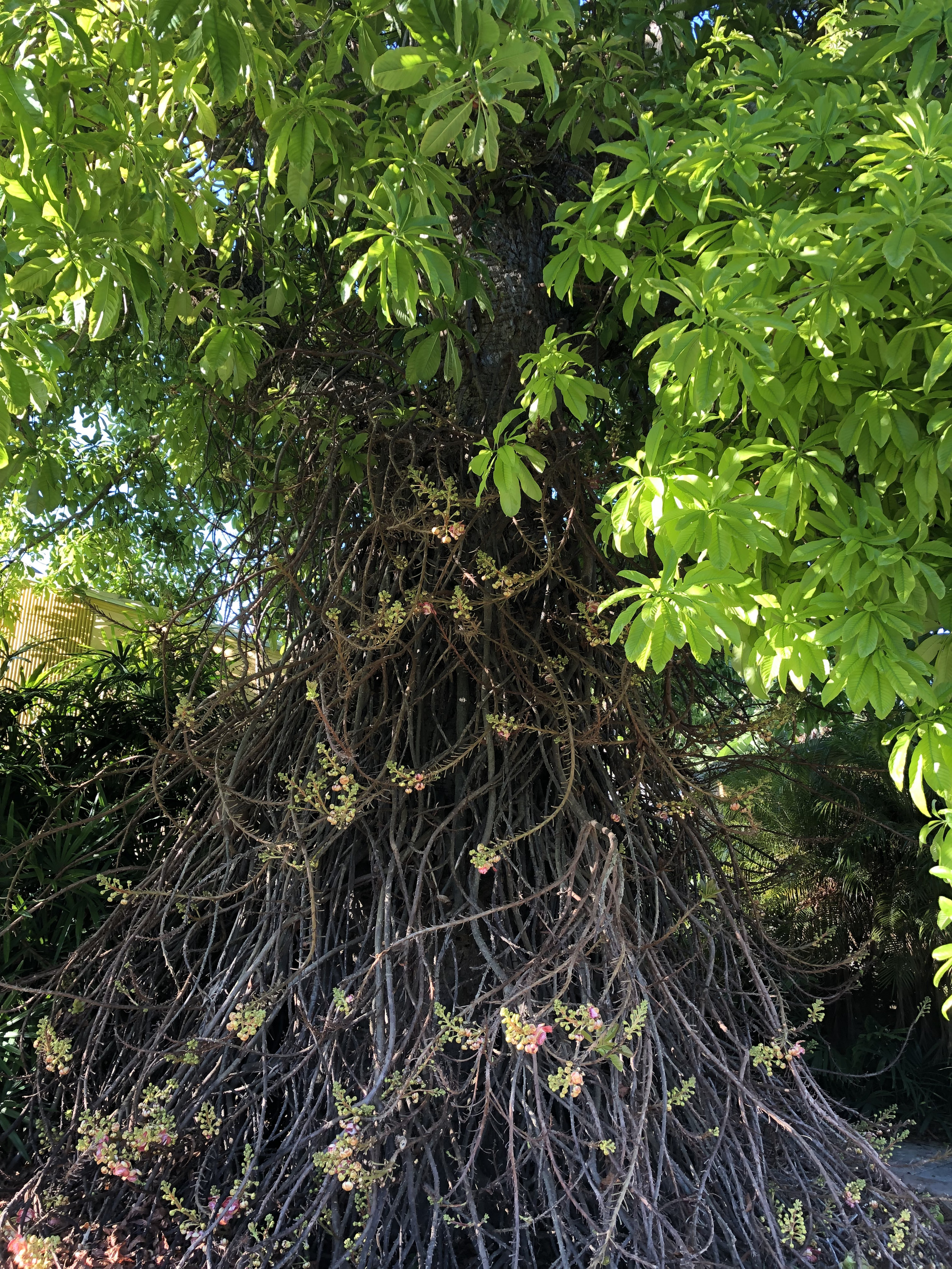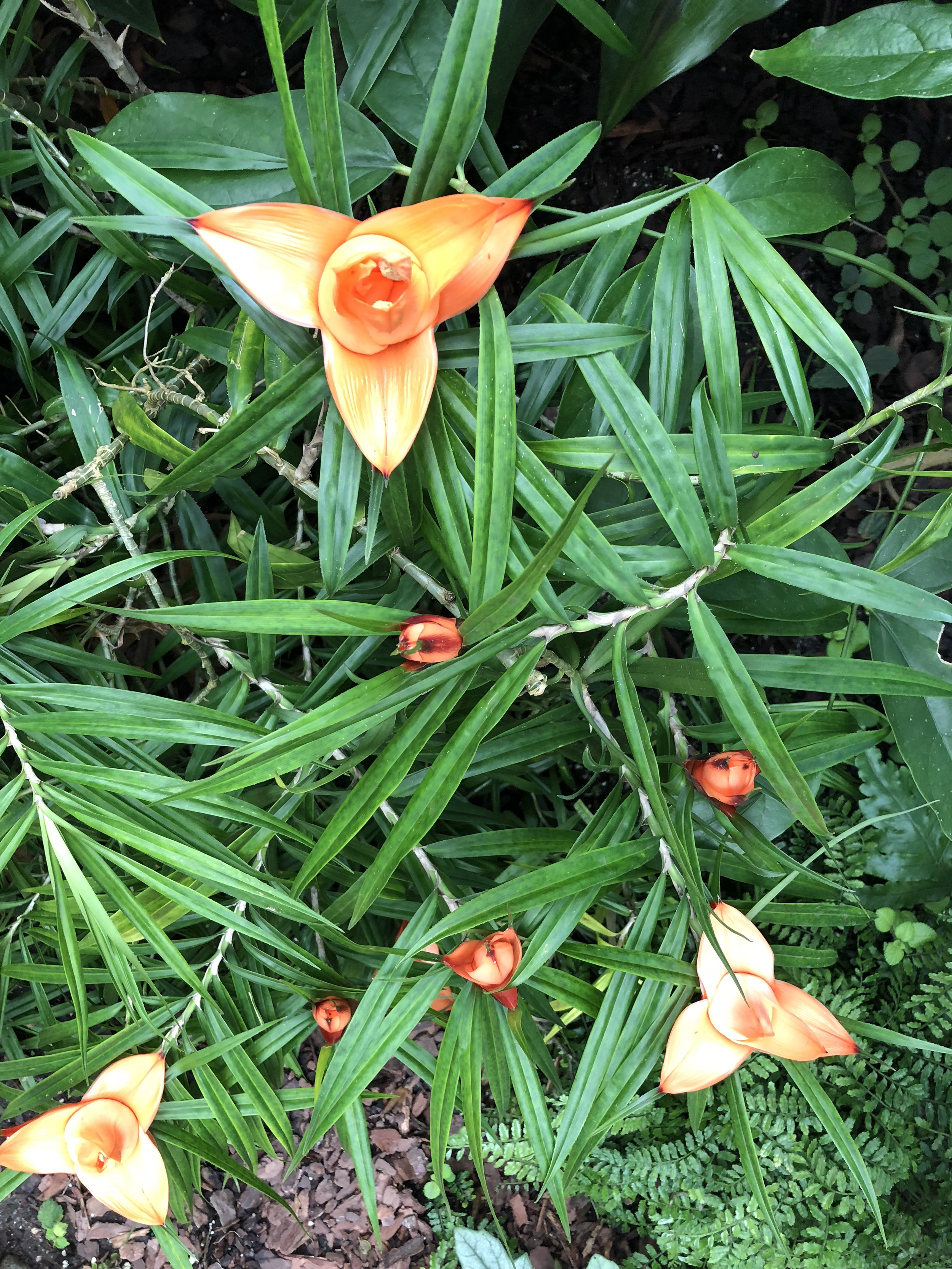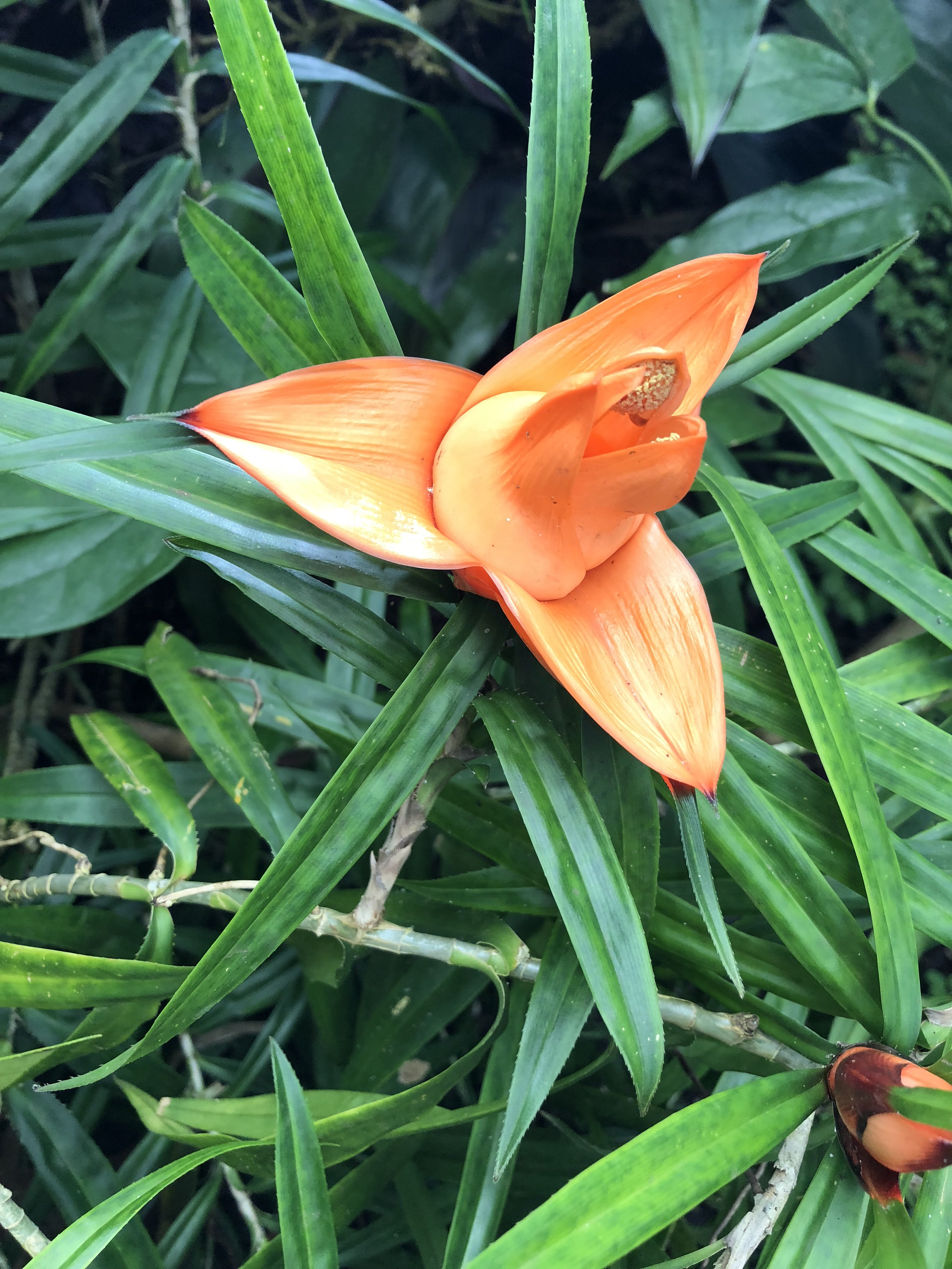
Strelitzia reginae
The bird of paradise, a widely cultivated plant, named so for its resemblance to the head and beak of a colorful exotic bird.

Strelitzia reginae
The bird of paradise, a widely cultivated plant, named so for its resemblance to the head and beak of a colorful exotic bird.

Tabebuia rosea
The rosy trumpet tree, often planted in Neotropical cities.

Tabebuia rosea
The rosy trumpet tree, often planted in Neotropical cities.

Tabebuia rosea
The rosy trumpet tree, often planted in Neotropical cities.

Brownea coccinea
The scarlet flame bean or Rose of Venezuela. It’s in the bean family (Fabaceae) and is native to parts of South America.

Couroupita guianensis
The cannonball tree a deciduous tree that loses its leaves in the winter. You can see it’s new leaves meaning winter is just about over. The flowers lack nectar but produce 2 types of pollen, sterile pollen which female carpenter bees collect to feed their larvae and while doing so subsequently fertile pollen is deposited on their heads and backs where it is rubbed onto the female part (stigma) of the next flower visited. The process of pollination results in giant cannonball fruits!

Couroupita guianensis
The cannonball tree a deciduous tree that loses its leaves in the winter. You can see it’s new leaves meaning winter is just about over. The flowers lack nectar but produce 2 types of pollen, sterile pollen which female carpenter bees collect to feed their larvae and while doing so subsequently fertile pollen is deposited on their heads and backs where it is rubbed onto the female part (stigma) of the next flower visited. The process of pollination results in giant cannonball fruits!

Couroupita guianensis
The cannonball tree a deciduous tree that loses its leaves in the winter. You can see it’s new leaves meaning winter is just about over. The flowers lack nectar but produce 2 types of pollen, sterile pollen which female carpenter bees collect to feed their larvae and while doing so subsequently fertile pollen is deposited on their heads and backs where it is rubbed onto the female part (stigma) of the next flower visited. The process of pollination results in giant cannonball fruits!

Couroupita guianensis
The cannonball tree a deciduous tree that loses its leaves in the winter. You can see it’s new leaves meaning winter is just about over. The flowers lack nectar but produce 2 types of pollen, sterile pollen which female carpenter bees collect to feed their larvae and while doing so subsequently fertile pollen is deposited on their heads and backs where it is rubbed onto the female part (stigma) of the next flower visited. The process of pollination results in giant cannonball fruits!

Musa haekkinenii
A wild species of banana from Northern Vietnam is blooming in the Conservatory.

Musa haekkinenii
A wild species of banana from Northern Vietnam is blooming in the Conservatory.

Psidium guajava
The guava, native to the Neotropics (Caribbean and the Americas), this species has many cultivars and is grown for it’s delicious fruits.

Clerodendrum quadriloculare
The q-tip tree or starburst plant is a fast growing and fairly invasive plant that I can’t help but adore.

Clerodendrum quadriloculare
The q-tip tree or starburst plant is a fast growing and fairly invasive plant that I can’t help but adore.

Acacia pinetorum
The pineland acacia, which is endemic to Florida (meaning it doesn’t grow anywhere else). The primary larval host of Nikerbean Blue butterflies.

Acacia pinetorum
The pineland acacia, which is endemic to Florida (meaning it doesn’t grow anywhere else). The primary larval host of Nikerbean Blue butterflies.

Bletia purpurea
A terrestrial orchid, commonly called the pine pink orchid. It’s native to the highly endangered pine rockland habitat and cypress swamps and is threatened in the state of Florida.
Photo: Dr. Jason Downing

Bletia purpurea
A terrestrial orchid, commonly called the pine pink orchid. It’s native to the highly endangered pine rockland habitat and cypress swamps and is threatened in the state of Florida.
Photo: Dr. Jason Downing

Bletia purpurea
A terrestrial orchid, commonly called the pine pink orchid. It’s native to the highly endangered pine rockland habitat and cypress swamps and is threatened in the state of Florida.
Photo: Dr. Jason Downing

Freycinetia sp.
A new planting at Fairchild, a gift from Singapore Botanic Garden. In the ancient family Pandanaceae, which is native to the Old World Tropics (Africa, Asia, Europe) and dates from the Cretaceous when dinosaurs were roaming around.

Freycinetia sp.
A new planting at Fairchild, a gift from Singapore Botanic Garden. In the ancient family Pandanaceae, which is native to the Old World Tropics (Africa, Asia, Europe) and dates from the Cretaceous when dinosaurs were roaming around.





















